Chechnya. Part ISeptember 29, 2007 Taxi drivers from Dagestan don’t like driving around Chechnya. So there are two options: either look for a Chechen taxi driver in Khasavyurt, or get a cab as far as the border and then switch. You have to go out and look for a Chechen taxi driver at the market where they all hang out. Therefore I got a taxi driver from Khasavyurt to take me as far as the border. The way everyone uses the term “border” in these parts is not a figure of speech, far from it. Technically there shouldn’t be any borders on Russia’s territory, but they do things a little differently around here. The people manning the checkpoint serve two purposes — they stand there and they also collect money from those crossing. They don’t really bother the passenger cars, but take 500 roubles for each truck. The owners of the Derbent city walls did roughly the same thing many hundreds of years ago. A Chechen man with a clearly pronounced civic position agrees to give me a ride. He spends the entire drive telling me about his take on the authorities, the coppers, the military and the ways of the world in general. The checkpoint’s militarized back office on the border: 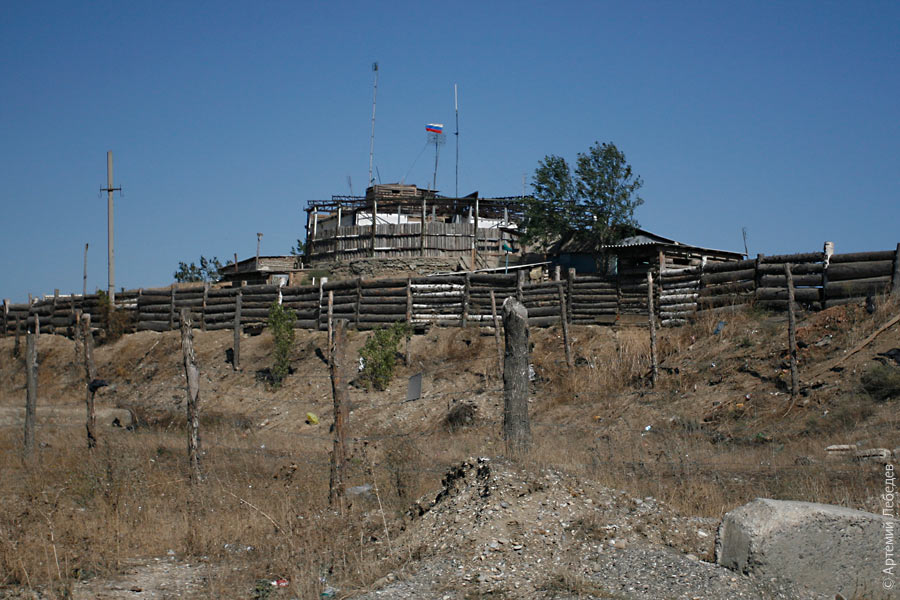 The way Chechens drive is five times worse than how the Dagestanis do it. Anyone who goes to Dagestan might conclude that it’s got the world’s worst drivers. But you can always go one better: in Chechnya they also predominantly drive Zhiguli brand cars, but driving slower then 150km/h is considered cringe-worthy. Almost all roads have two lanes. One going one way; the other in the opposite direction. What does a Chechen in a VAZ-2109 burning rubber at 160km/h do if he’s started overtaking a “Kamaz” truck travelling at 140km/h, but the oncoming car has approached faster than anticipated? He takes up the centre line, leaving ten centimetres of space on his left and ten on his right. In such instances it’s better to switch off all of your driving reflexes, whistle nonchalantly, and gaze out the window. There are heaps of trucks on the highway transporting bricks that are neither tied down, nor covered up. 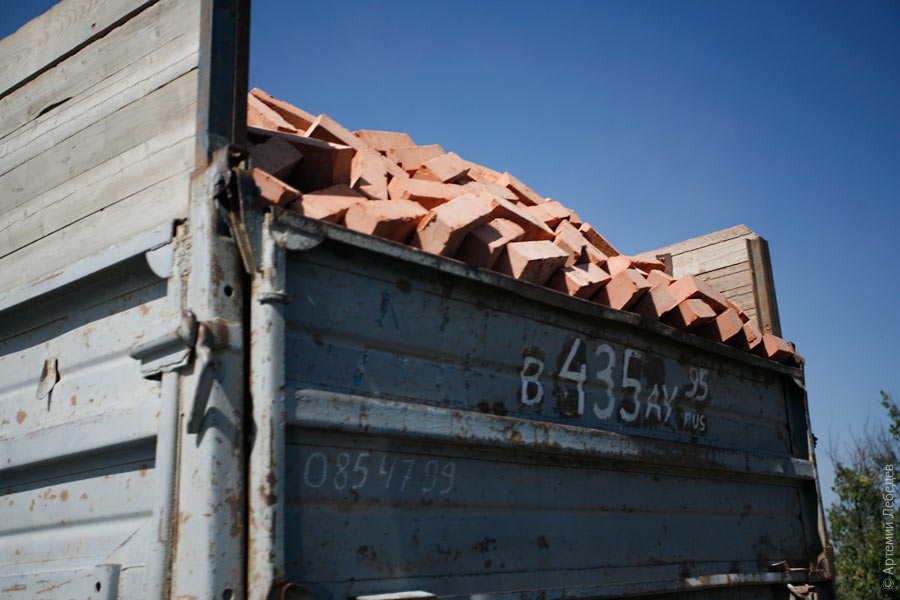 Technically, traffic rules of any sort cannot work in the Caucasus. One simple reason being that no one in the Caucasus has ever fastened their seatbelt. And if someone forces them to do so, a bloody multi-year war will ensue. A copper pulls my driver over for speeding (it goes without saying that he doesn’t tell us off for not wearing seatbelts). He issues a speeding ticket. This too is a decidedly rare occurrence in Chechnya. The driver gets back in the car, opens his window, crumples up the ticket, and throws it out onto the road: “They’ll have to send a formal notice to my registered address, there’s nothing left of my house anyway”. A vigorous reconstruction effort is underway in Chechnya. They’re sparing no effort to ensure that there aren’t any noticeable signs of the war. The bottoms of all the trees on the road to Grozny are painted white — a clear signal that peace and order reign here. 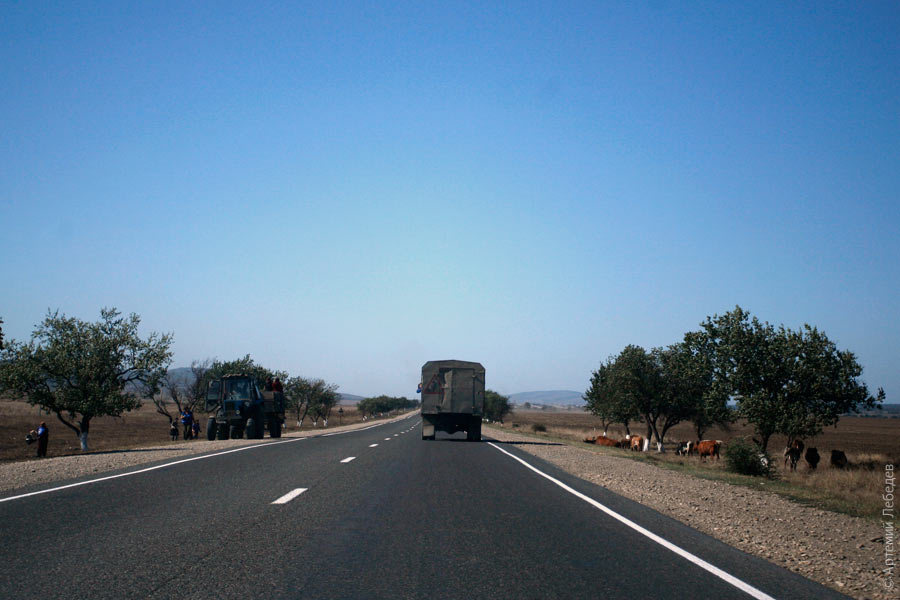 Plastic sheeting is one of the main design materials. It’s convenient for covering large surfaces, plus everything looks neat and tidy. For instance, it’s used for fitting out bus stops. 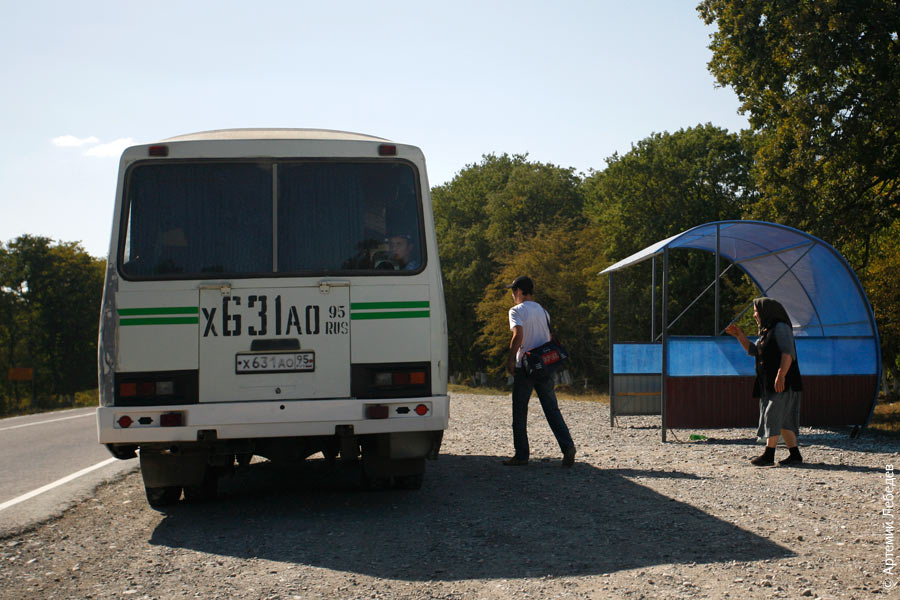 In Chechnya you see metal gates for sale just as often as you encounter cinder blocks for sale in Dagestan. I don’t know who makes them, but there’s nothing else on offer on the roadside. There aren’t any potatoes, milk, or berries displayed on stools along the road. Yet there are plenty of gates standing there. Or rather leaning against the fence, where their seller has placed them. 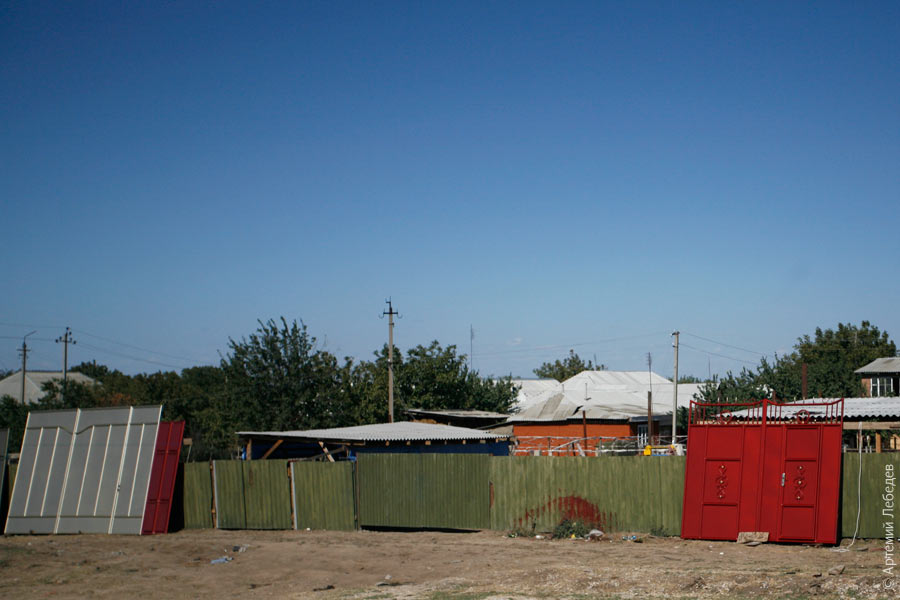 The most popular gate motif used to be the “1980 Olympics” logo (in Dagestan as well, actually). 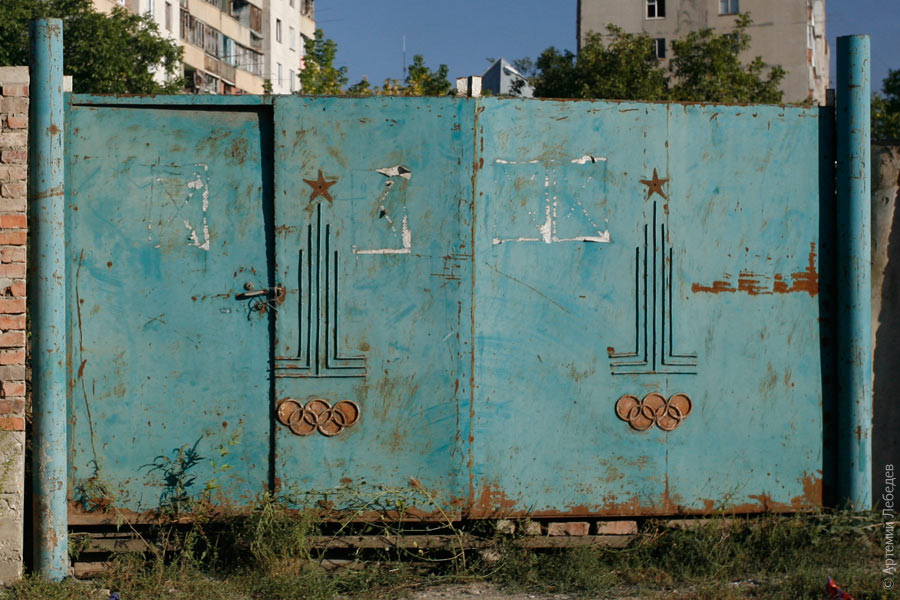 There are reinforced concrete structures commemorating the heroic deeds of the father on all of the roads. 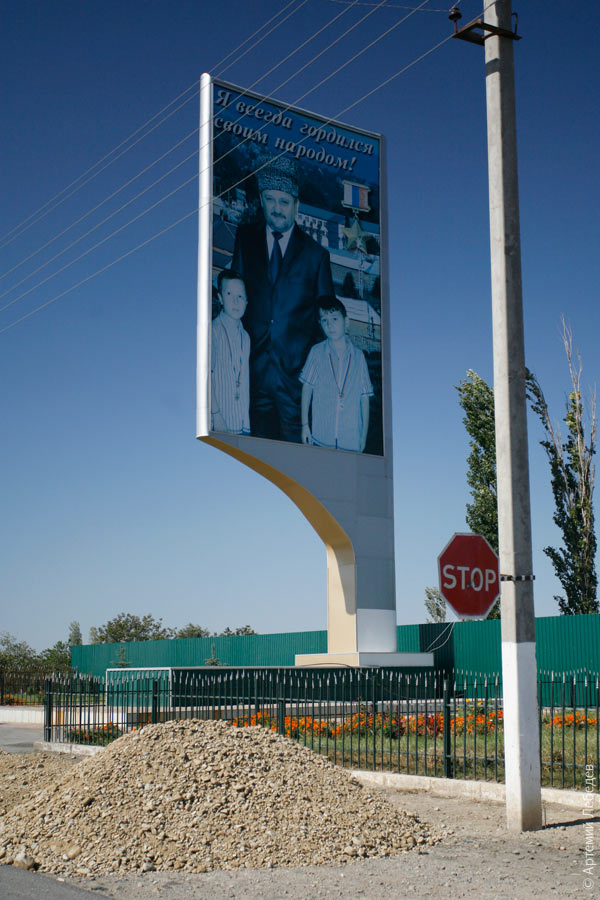 I’ve always been proud of my people! Of the son. 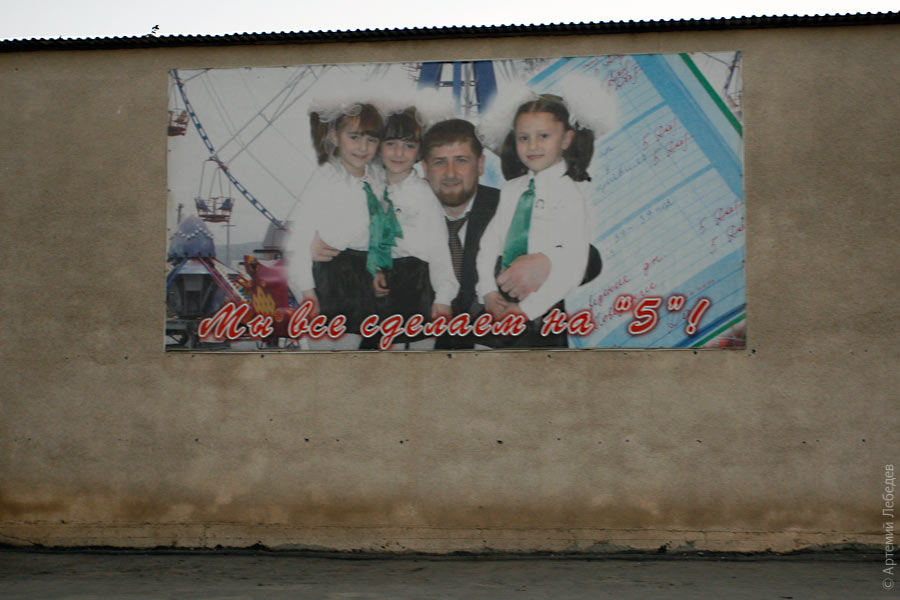 We’re going to do an A+ job! And the holy spirit (depicted on the column above the coat of arms and underneath the globe). 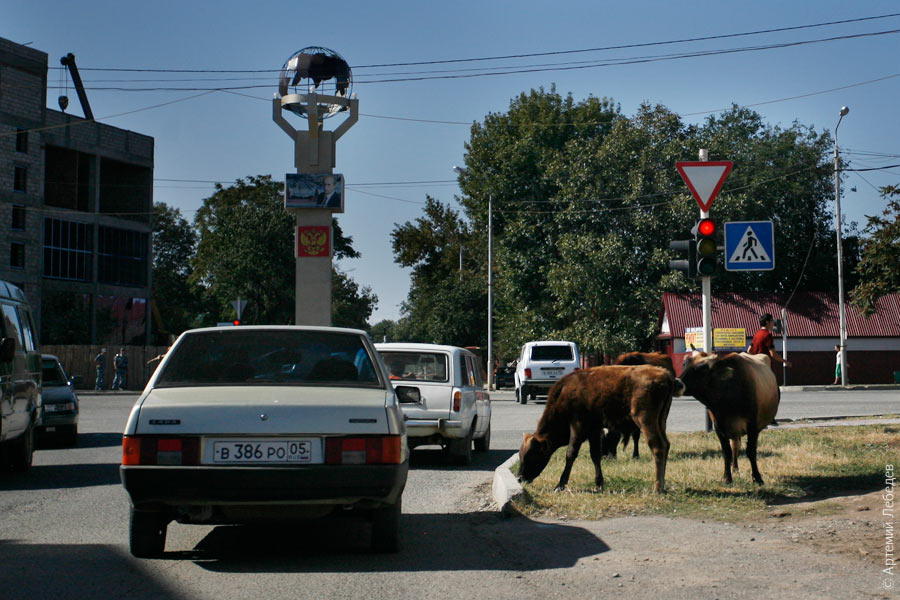 GudermesMapWe’ve ended up in Gudermes. The town’s outward signs betray little about its history.  This is what Chechen towns look like — unusually neat, even, devoid of anything that hints at the past. Only references to the father’s unnamed heroic deed.  Your people remember your heroic act! If you compare Chechen imagery with that of other countries, you’ll find similarities with North Korea (the late father and the reigning son, also it’s very clean), the Arab Emirates (the same tasteless, wall-sized colour printouts of amateur photos of the late ruler) and Turkmenia (statues and busts of the father on every corner). 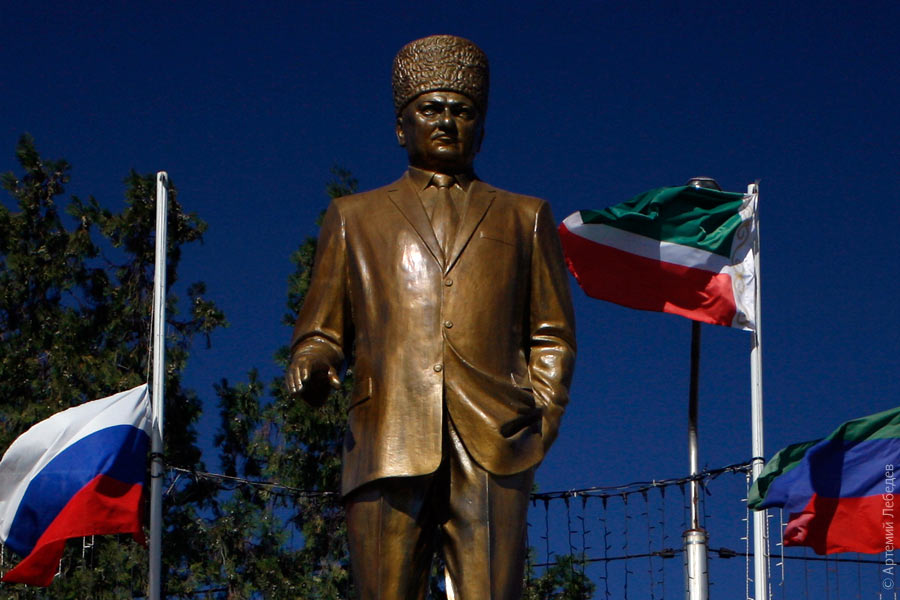 The father and the son are frequently shown together. What’s more is, you can see the father’s sincere admiration for his son with the naked eye. 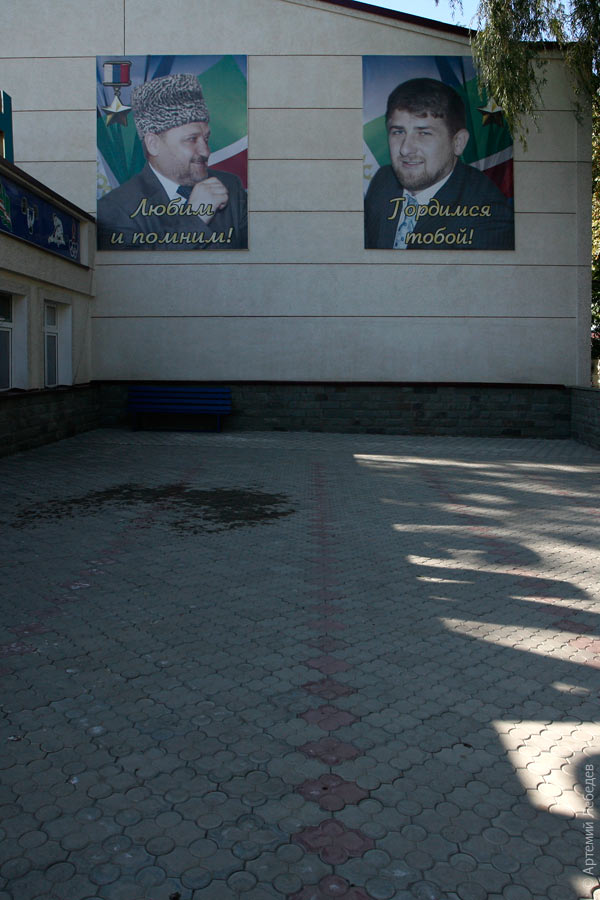 We love you and we remember! We’re proud of you! This is one of the walls of the “Ramzan” boxing club. The scene on the wall shows a black guy under a Chechen flag punching another black guy, this one under a Russian flag, in the face. 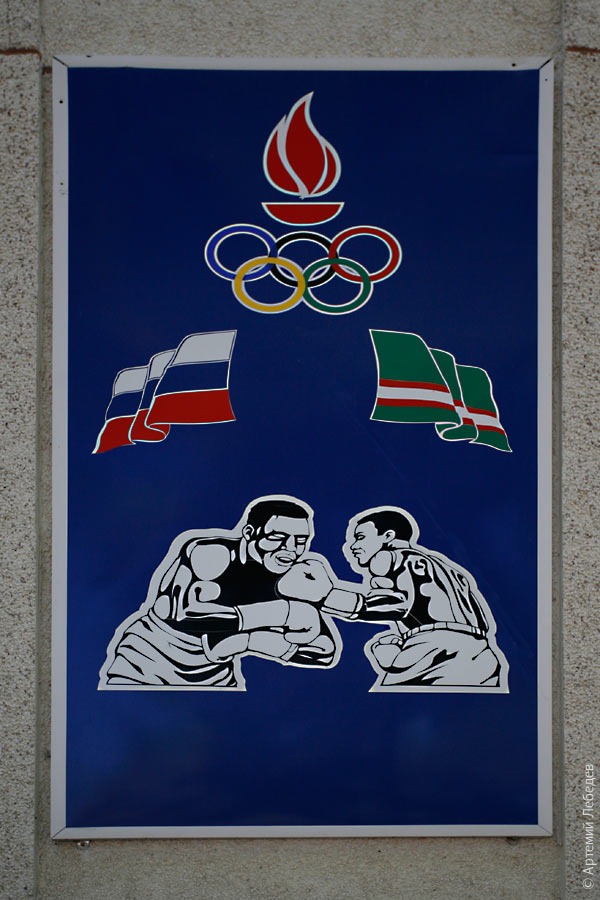 A man of athletic build in camouflage uniform holding an automatic rifle is stationed next to all buildings of any importance. It looks a great deal like Israel. When I took a photograph of the Gudermes train station a copper showed up instantaneously and forced me to delete the pic. 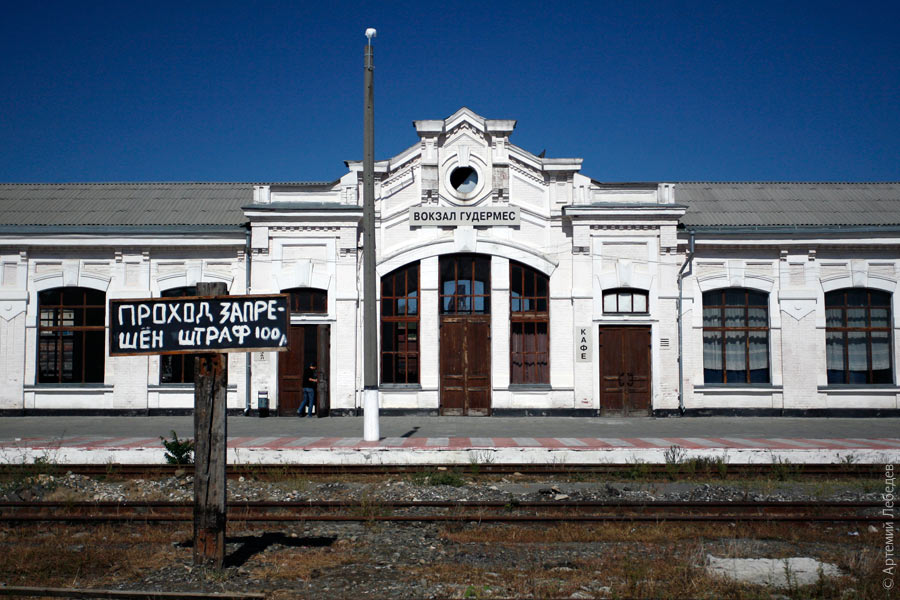 No crossing, 100 rouble fine Although he might’ve thought that I took a picture of the post of the transportation law and order department, which is located on the disused tracks. 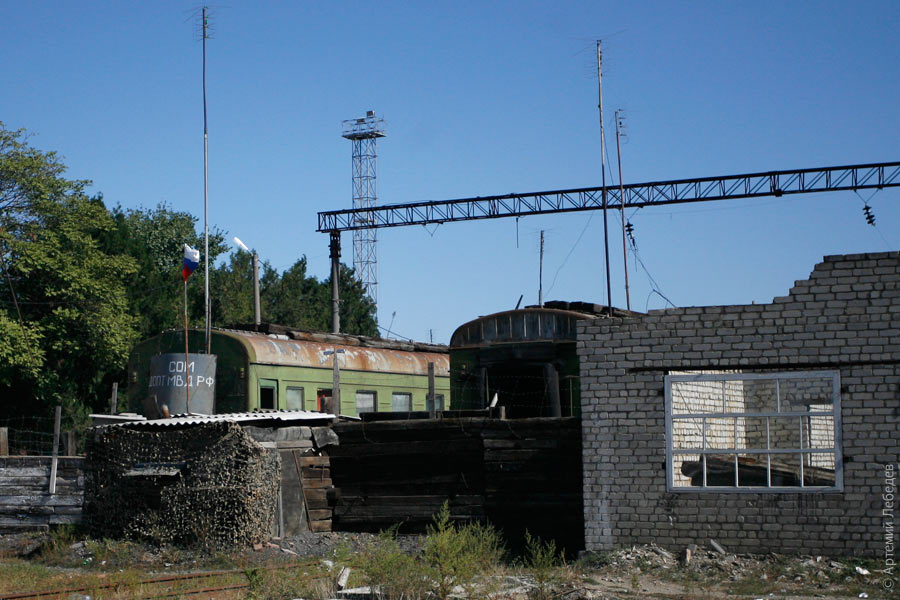 ArgunMapSpotted a superfuturistic traffic light from outer space. Admittedly, it wasn’t working. 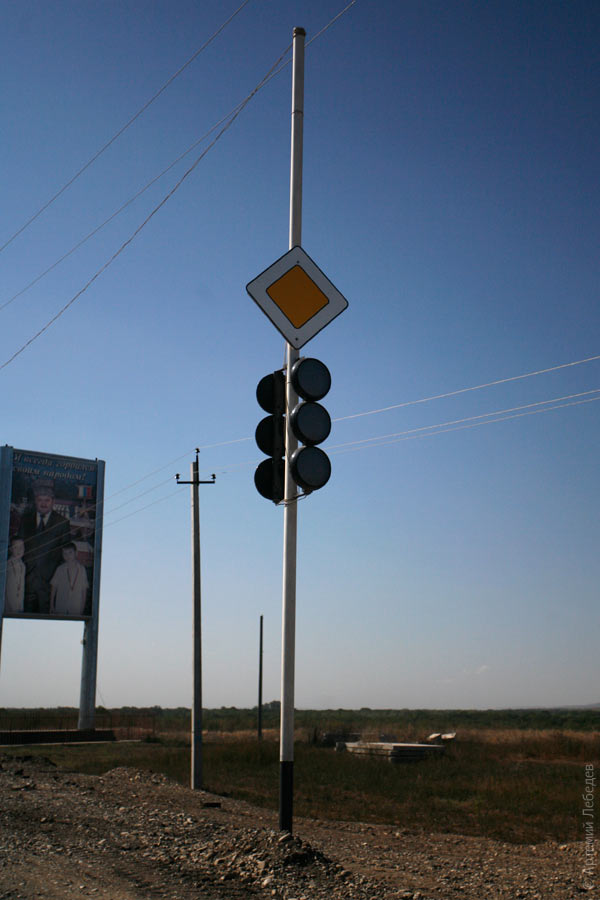 “United Russia” flags hang everywhere — a mark of federalism.  Every municipality is duty bound to show its attitude towards the president. 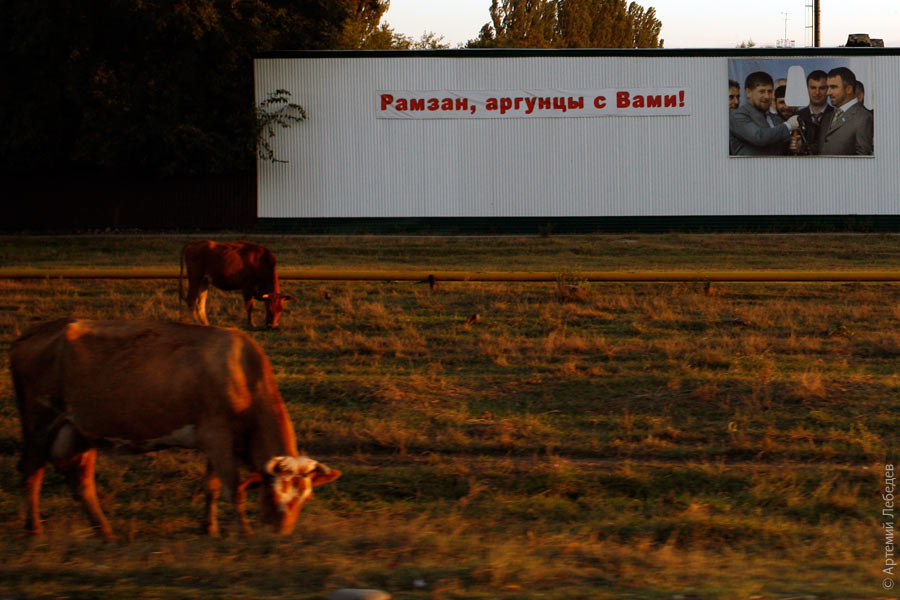 Ramzan, the people of Argun stand with you! On the one hand, they’ve written “stop” on the asphalt in front of traffic lights, complying with the latest requirements. 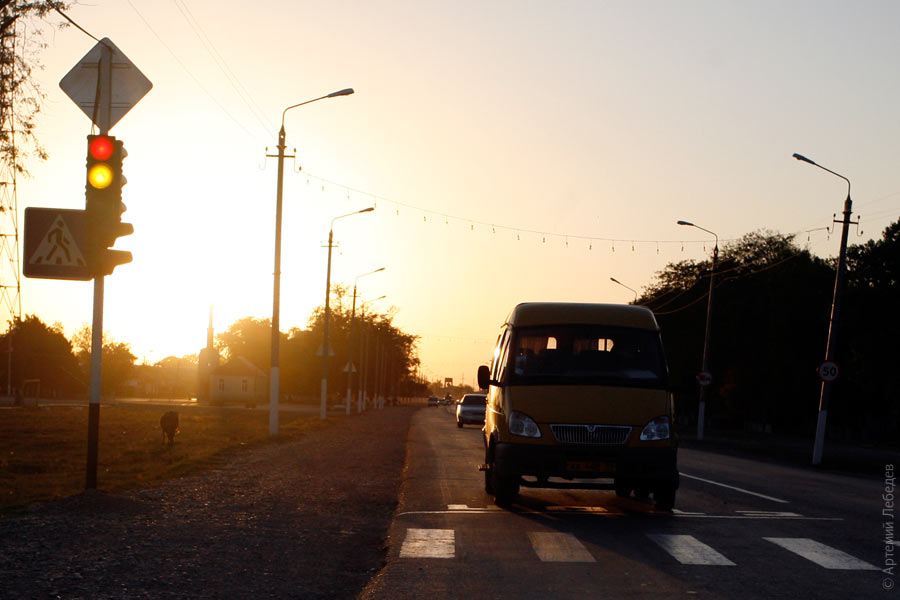 On the other hand, they’ve got “Allah akbar” written in Arabic across the entire hillside. 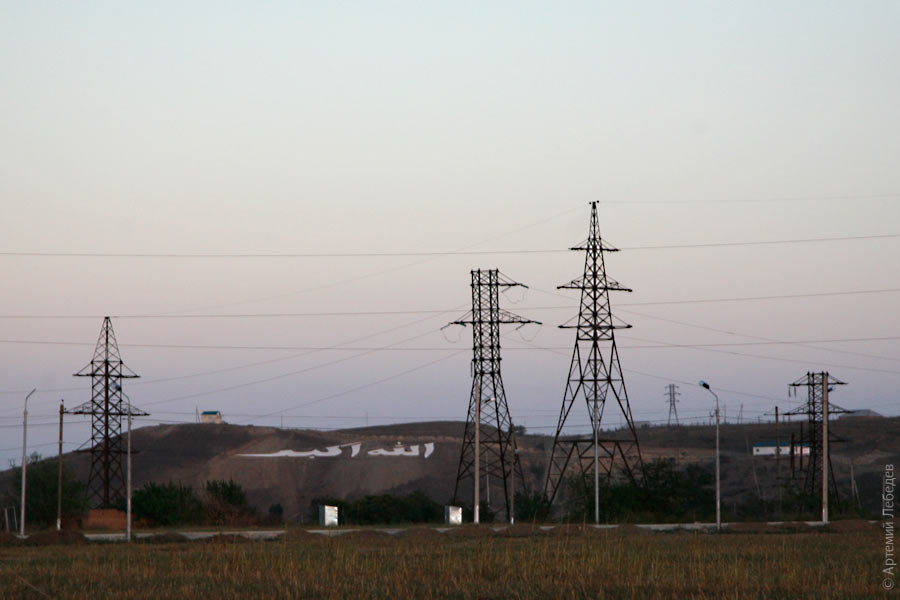 The driver who’d initially said yes to taking me as far as Gudermes enthusiastically agreed to show me around his hometown, Grozny. |